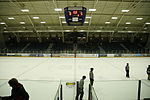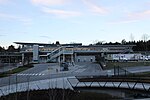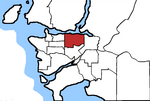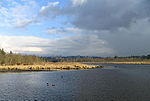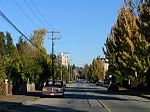Still Creek
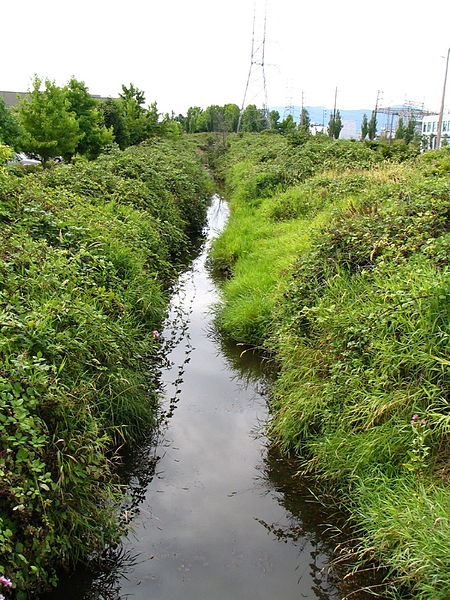
Still Creek is a long stream flowing across Central Burnaby, British Columbia and into Burnaby Lake (which outflows into the Brunette River). Still Creek's path lies mainly through the industrial area which contributes to its high level of pollution, although through dedicated work of local volunteers the creek is slowly recovering.In 2006, the City of Burnaby approved a plan to reduce the amount of flooding in the Still Creek watershed (the low-lying area of Gilmore Avenue is heavily flooded every year) while improving fish and wildlife habitat.There is considerable vegetation along the creek banks that serves as a habitat for great blue heron, red-tailed hawk, belted kingfisher, and even an occasional pheasant, as well as aquatic songbirds such as red-winged blackbird. Beavers have always maintained their presence while river otters are more recent inhabitants. Coastal cutthroat trout are gradually returning. In November 2012, for the first time in almost 80 years, numerous full-sized salmon have been observed returning to spawn in many parts of Still Creek.
Excerpt from the Wikipedia article Still Creek (License: CC BY-SA 3.0, Authors, Images).Still Creek
Pavillion Trail, Burnaby
Geographical coordinates (GPS) Address Nearby Places Show on map
Geographical coordinates (GPS)
| Latitude | Longitude |
|---|---|
| N 49.25 ° | E -122.95944444444 ° |
Address
Pavillion Trail
V3J 3Z9 Burnaby
British Columbia, Canada
Open on Google Maps
